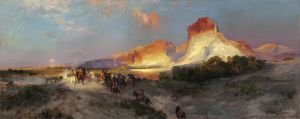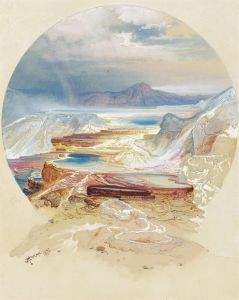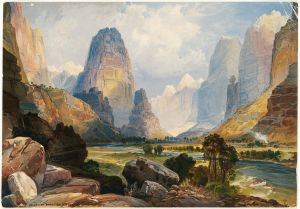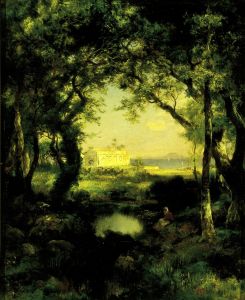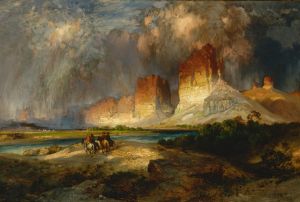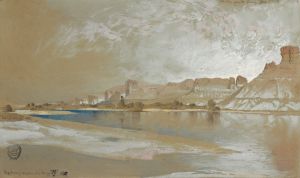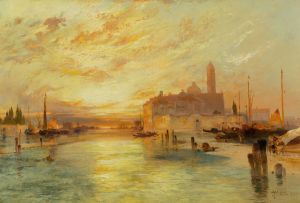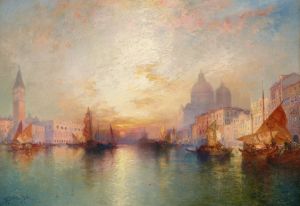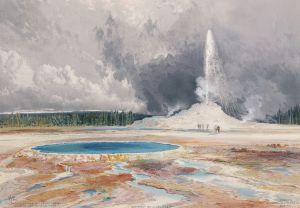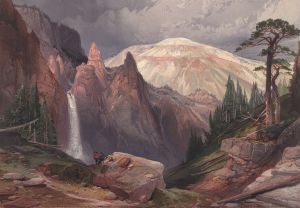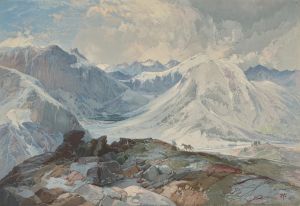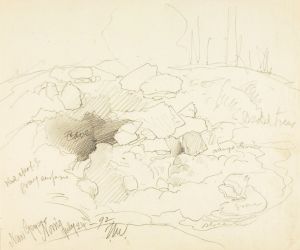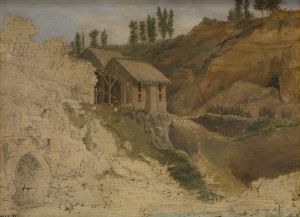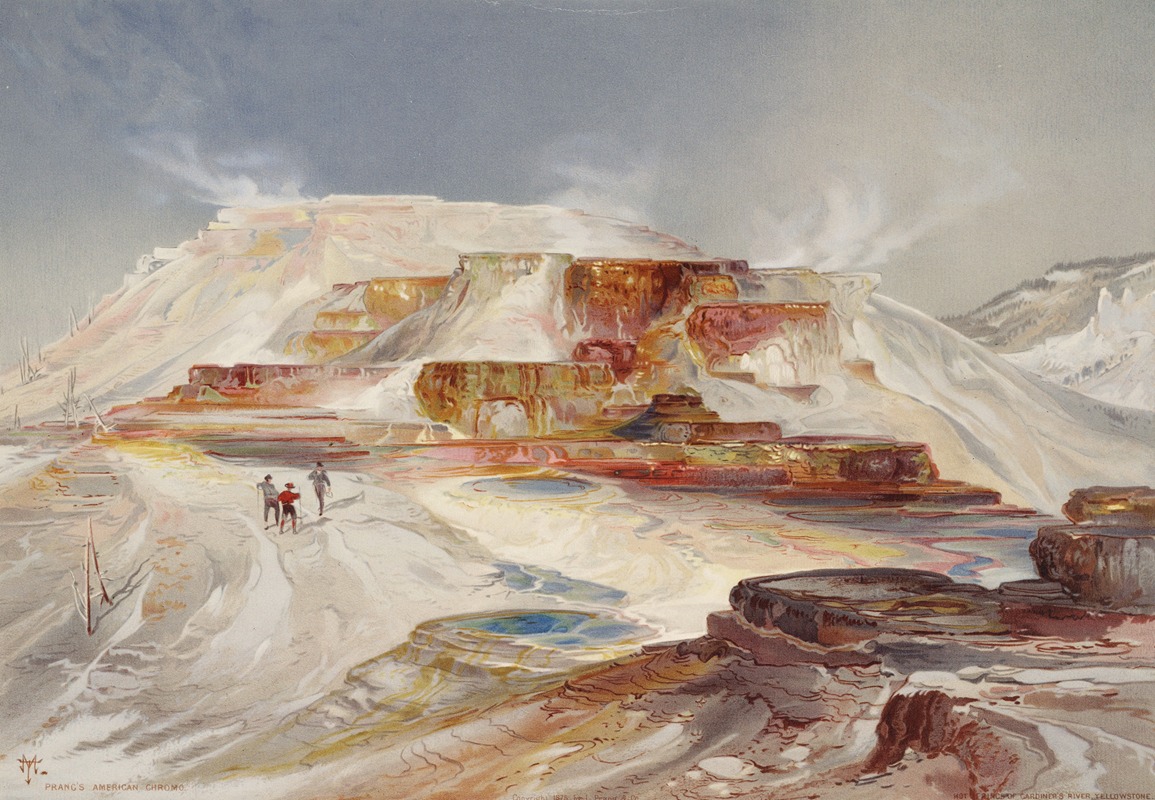
Hot Springs of Gardiner’s River, Yellowstone
A hand-painted replica of Thomas Moran’s masterpiece Hot Springs of Gardiner’s River, Yellowstone, meticulously crafted by professional artists to capture the true essence of the original. Each piece is created with museum-quality canvas and rare mineral pigments, carefully painted by experienced artists with delicate brushstrokes and rich, layered colors to perfectly recreate the texture of the original artwork. Unlike machine-printed reproductions, this hand-painted version brings the painting to life, infused with the artist’s emotions and skill in every stroke. Whether for personal collection or home decoration, it instantly elevates the artistic atmosphere of any space.
"Hot Springs of Gardiner’s River, Yellowstone" is a painting by the American artist Thomas Moran, created in 1872. Thomas Moran (1837-1926) was a prominent painter and printmaker of the Hudson River School, known for his dramatic landscapes of the American West. His works played a significant role in the establishment of the United States' national parks.
This particular painting depicts the hot springs located near the Gardiner River in Yellowstone National Park, which was established as the first national park in the world in 1872, the same year the painting was created. Moran's work was instrumental in the campaign to create the park, as his paintings, along with photographs by William Henry Jackson, were presented to Congress to advocate for the preservation of the Yellowstone region.
"Hot Springs of Gardiner’s River, Yellowstone" captures the unique geothermal features of the area, showcasing the vibrant colors and dynamic landscape that characterize the hot springs. Moran's use of color and light in the painting emphasizes the natural beauty and otherworldly quality of the hot springs, with steam rising from the water and the rugged terrain surrounding the scene.
Moran's journey to Yellowstone was part of the Hayden Geological Survey of 1871, led by Ferdinand Vandeveer Hayden. This expedition was one of the first comprehensive surveys of the Yellowstone region, and Moran was invited to join as the official artist. His sketches and paintings from this trip provided a visual record of the landscape, which was relatively unknown to the American public at the time.
The painting is an example of Moran's ability to combine scientific accuracy with artistic imagination. While he aimed to depict the landscape realistically, he also infused his work with a sense of awe and grandeur, capturing the sublime beauty of the natural world. This approach helped to inspire a greater appreciation for the American wilderness and the need to protect it.
"Hot Springs of Gardiner’s River, Yellowstone" is part of the collection at the Smithsonian American Art Museum in Washington, D.C. The painting, along with Moran's other works from the Yellowstone region, continues to be celebrated for its historical significance and artistic merit. Moran's contributions to American art and conservation have left a lasting legacy, and his paintings remain an important part of the cultural heritage of the United States.
In summary, Thomas Moran's "Hot Springs of Gardiner’s River, Yellowstone" is a significant work that captures the natural beauty of Yellowstone National Park and played a role in its establishment. The painting is a testament to Moran's skill as an artist and his contribution to the American conservation movement.





